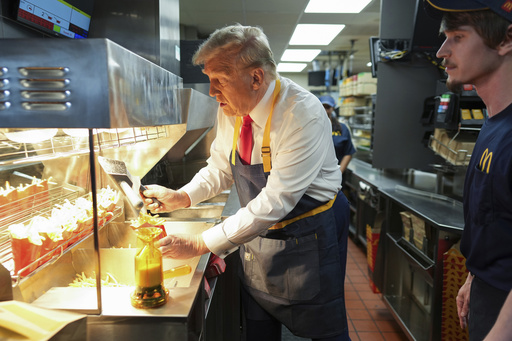
WASHINGTON — The recent election results indicate that President-elect Donald Trump successfully tapped into pervasive concerns regarding an economy that, despite signs of growth, has struggled to adequately support the middle class, according to comprehensive research involving over 120,000 voters across the nation.
Concerns about daily living expenses played a significant role in Trump’s return to the Oval Office. Voters in pivotal states expressed fears that illegal immigration was adding to their community costs, and many felt that their financial security was jeopardized following the surge in inflation seen after the pandemic. This year, a growing number of voters reported feeling as though they were falling behind financially compared to two years ago.
Findings indicate that Trump made gains among lower-income individuals, middle-income households, and those without college degrees. All these demographics appeared to prioritize their household finances more heavily than issues concerning the future of democracy that were central to Vice President Kamala Harris’ voter base.
Harris’ strategy to rally support around the issue of abortion rights did not yield the expected results. While she had some success with college-educated and higher-income voters, Trump managed to retain his loyal followers and even made slight advancements with some of the Democratic base.
Voters exhibiting economic vulnerability leaned more toward supporting Trump, while those feeling relatively secure tended to favor Harris. Notably, Trump achieved a clear victory among the segment of voters who felt their family finances were “falling behind,” a demographic that increased from about 20% in 2020 to nearly 30% this year. He also garnered the support of over half of the voters who expressed significant concern over rising costs for food, housing, and healthcare.
Ultimately, voters with a strong focus on economic issues broke decisively for Trump. Those who identified inflation as their top voting concern were nearly twice as inclined to favor him over Harris. About 60% of voters prioritizing the economy and employment as the main issues facing the nation sided with Trump as well.
The political divide between high- and low-income Americans was stark, with Trump slightly increasing his support among those earning less than $100,000 annually, while Harris maintained her grip on higher-income voters.
Trump’s stringent policies regarding illegal immigration resonated with voters this year. More than 40% believed that individuals illegally residing in the U.S. should be deported, a noticeable increase from approximately 30% in 2020. This sentiment was echoed even among those generally supportive of broader immigration policies, as 60% of voters under 45 felt that undocumented immigrants should be allowed to pursue legal status, down from 75% in the previous election.
Among voters who had immigrated to the U.S., support for Harris was more pronounced, but even within this group, 40% endorsed the idea of deporting undocumented immigrants. Concerns over the impact of illegal immigration on local communities were evident. In Ohio, where Trump amplified fears surrounding immigration through misleading statements, about 75% of voters believed that illegal immigration creates more harm than benefit for their state, a viewpoint shared by approximately 90% of Trump supporters and more than half of those backing Harris.
Trump also strengthened his position among voters lacking college degrees. Over half of the electorate reported not having a college education, and both Biden and Harris campaigned at union venues, promising to eliminate degree prerequisites for certain government jobs. Unfortunately, this strategy did not resonate as strongly as intended among Democratic voters.
In the previous election, Trump slightly edged out Biden among non-college-educated voters. This time, he made modest gains, securing a clear majority of this group, while Harris only garnered support from about 40%. Ultimately, voters chose to entrust Trump with the economy, even as many acknowledged that he did not seem to advocate for individuals like themselves.
